8 Things You Didn't Know About Cayman Islands Swimming
8 Things You Didn't Know About Cayman Islands Swimming
This article discusses eight things you did not know about competitive swimming in the Cayman Islands.
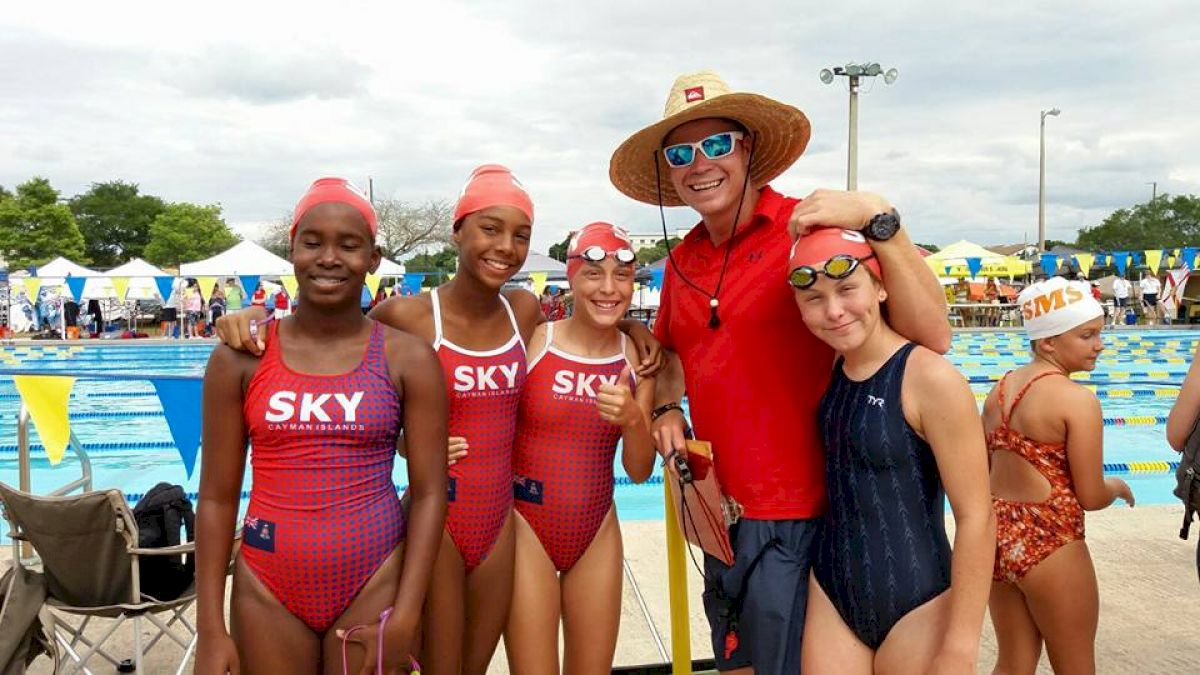
Swimming has the power to connect people from all over the globe. We all have our own unique perceptions of the sport within our own country, but how often do we see swimming through the perspective of another nation?
Thus, we reached out to David Pursley -- a coach at Stingrays Swim Club in George Town, Cayman Islands -- to educate us more about how swimming in the Caymans compares to swimming in the United States.
Before moving to the Caribbean in 2015, Pursley had coaching experience as an assistant at the University of Alabama and at the club level with all groups from beginners to high school swimmers. His time as a coach closely mimicked his path as an athlete. He began swimming as an age-grouper, continued through high school, and competed in college for Arizona and later for Utah.
Here is a list of eight new things you should know about Cayman Islands competitive swimming through the eyes of Pursley.
"As a coach, I get to be invested in and have control over every aspect of the athletes' progression," Pursley said of his role in the Stingrays' small, not-for-profit club. "I am the dryland and strength coach, the nutritionist, the sports psychologist, political advocate, and the swim coach wrapped in one. Additionally, because our club is smaller, I work with all levels from our 8-and-under beginners to our national team and Division I-caliber athletes."
2.) …which means each club and swimmer has vast potential to grow
This is the No. 1 aspect that inspired Pursley to take the job and make the move.
"I knew there was a possibility to grow a program," Pursley said. "I wanted a program that could be built and develop, not something established and running smoothly. When I first arrived, it was exactly what I had hoped for. The coach before me, Andy Copely, had done an excellent job in creating a structure within the club, but it was in its early stages. I saw a program and team that I knew I could have an immediate impact on and build from there."
"We only have a six-lane, 25m pool that is split with the government lessons program and another club team," Pursley said. "For years and years, a 50m pool has been talked about. For now, though, we battle for space and swim at less-than-ideal times. Mornings begin at 5:15 and evening practices don't end until 8 which takes a toll on the swimmers."
"The biggest difference between the U.S. and here is quite obviously the size," he said. "Our team is only 80-plus swimmers. There are three teams on the island: One is slightly larger than us and the other slightly smaller."
"The size of swimming really limits the opportunities for swimmers and makes the world a little too small," Pursley said. "We don't have summer league, club, high school, college, and pro swimming here. The gaps in competition can be pretty big. We even lose some of the swimmers that might not show potential until late because they have no one to compare themselves to and compete at their level."
6.) Or can be totally awesome for the coaches and athletes….
"As a coach, I have tremendous support from the families on the team, and we seem to find new ways to take a step forward each season," Pursley said. "...Because we do not have the resources [that are available to swimmers in the U.S.] we must adapt and apply what we can to fit our circumstances. We rely more on our internal drive -- and hard work -- than our external help.
"Many American programs, parents, and athletes put more priority on trying to find the edge than the athletes themselves. The responsibility is taken off the swimmer to succeed and put on every external aspect to achieve success."
"Most swimmers in the U.S. that reach the top and represent their country, don't do so until midway through or even after college," Pursley said. "There is a system in the U.S. that helps and promotes swimming at every level to achieve this. It is what makes the U.S. so strong -- coaches can focus on how to have a swimmer ready at 22, rather than at 12.
"However, here in Cayman, our best age group swimmers get to travel and compete internationally in front of big crowds with newspapers, radio, and TV as young as age 11. They don't need to work 15 years to reach their dreams. They can start and literally one year later be on a flight to represent their country."
8.) The community is so diverse, which leads to a supportive and fun environment
"The community here and the team itself is one of the most eclectic groups of people in any one location or team," Pursley said. "It is pretty incredible to see so many cultures working as one towards one goal. We have South Africans, Kiwis, Jamaicans, Bajans, Indians, British, Irish, Scottish, Guatemalans, Hondurans, Africans, Americans, Australians, Chinese, Canadians, and Caymanians all on one team working to make the best experience possible for everyone. It is really incredible."
---
Thus, we reached out to David Pursley -- a coach at Stingrays Swim Club in George Town, Cayman Islands -- to educate us more about how swimming in the Caymans compares to swimming in the United States.
Before moving to the Caribbean in 2015, Pursley had coaching experience as an assistant at the University of Alabama and at the club level with all groups from beginners to high school swimmers. His time as a coach closely mimicked his path as an athlete. He began swimming as an age-grouper, continued through high school, and competed in college for Arizona and later for Utah.
Here is a list of eight new things you should know about Cayman Islands competitive swimming through the eyes of Pursley.
1.) There is only one size for club teams in the Caymans: small…
"As a coach, I get to be invested in and have control over every aspect of the athletes' progression," Pursley said of his role in the Stingrays' small, not-for-profit club. "I am the dryland and strength coach, the nutritionist, the sports psychologist, political advocate, and the swim coach wrapped in one. Additionally, because our club is smaller, I work with all levels from our 8-and-under beginners to our national team and Division I-caliber athletes."
2.) …which means each club and swimmer has vast potential to grow
This is the No. 1 aspect that inspired Pursley to take the job and make the move.
"I knew there was a possibility to grow a program," Pursley said. "I wanted a program that could be built and develop, not something established and running smoothly. When I first arrived, it was exactly what I had hoped for. The coach before me, Andy Copely, had done an excellent job in creating a structure within the club, but it was in its early stages. I saw a program and team that I knew I could have an immediate impact on and build from there."
3.) Though the country is an island, and water is all around (literally), pool space is hard to come by
"We only have a six-lane, 25m pool that is split with the government lessons program and another club team," Pursley said. "For years and years, a 50m pool has been talked about. For now, though, we battle for space and swim at less-than-ideal times. Mornings begin at 5:15 and evening practices don't end until 8 which takes a toll on the swimmers."
4.) The small national population (60,000) means a smaller swimming community
"The biggest difference between the U.S. and here is quite obviously the size," he said. "Our team is only 80-plus swimmers. There are three teams on the island: One is slightly larger than us and the other slightly smaller."
5.) Which can be a challenge to the coaches and athletes….
"The size of swimming really limits the opportunities for swimmers and makes the world a little too small," Pursley said. "We don't have summer league, club, high school, college, and pro swimming here. The gaps in competition can be pretty big. We even lose some of the swimmers that might not show potential until late because they have no one to compare themselves to and compete at their level."
6.) Or can be totally awesome for the coaches and athletes….
"As a coach, I have tremendous support from the families on the team, and we seem to find new ways to take a step forward each season," Pursley said. "...Because we do not have the resources [that are available to swimmers in the U.S.] we must adapt and apply what we can to fit our circumstances. We rely more on our internal drive -- and hard work -- than our external help.
"Many American programs, parents, and athletes put more priority on trying to find the edge than the athletes themselves. The responsibility is taken off the swimmer to succeed and put on every external aspect to achieve success."
7.) Success for athletes can come at a much younger age
"Most swimmers in the U.S. that reach the top and represent their country, don't do so until midway through or even after college," Pursley said. "There is a system in the U.S. that helps and promotes swimming at every level to achieve this. It is what makes the U.S. so strong -- coaches can focus on how to have a swimmer ready at 22, rather than at 12.
"However, here in Cayman, our best age group swimmers get to travel and compete internationally in front of big crowds with newspapers, radio, and TV as young as age 11. They don't need to work 15 years to reach their dreams. They can start and literally one year later be on a flight to represent their country."
8.) The community is so diverse, which leads to a supportive and fun environment
"The community here and the team itself is one of the most eclectic groups of people in any one location or team," Pursley said. "It is pretty incredible to see so many cultures working as one towards one goal. We have South Africans, Kiwis, Jamaicans, Bajans, Indians, British, Irish, Scottish, Guatemalans, Hondurans, Africans, Americans, Australians, Chinese, Canadians, and Caymanians all on one team working to make the best experience possible for everyone. It is really incredible."
---
The best swimming coverage. Straight to your inbox.
Don't miss breaking news, feature stories, event updates, and more. Sign up for the FloSwimming mailing list today.Related Content
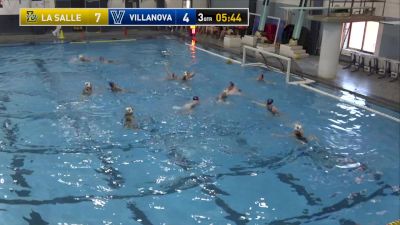 Replay: Le Salle vs Villanova - WWP - 2024 La Salle vs Villanova | Apr 7 @ 3 PM
Replay: Le Salle vs Villanova - WWP - 2024 La Salle vs Villanova | Apr 7 @ 3 PMApr 7, 2024
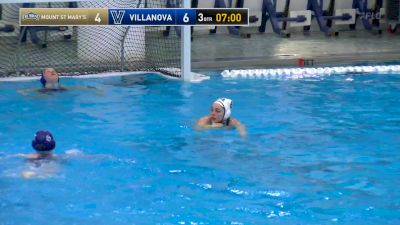 Replay: Mount St. Mary's vs Villanova - WWP - 2024 Mount St. Mary's vs Villanova | Apr 6 @ 7 PM
Replay: Mount St. Mary's vs Villanova - WWP - 2024 Mount St. Mary's vs Villanova | Apr 6 @ 7 PMApr 7, 2024
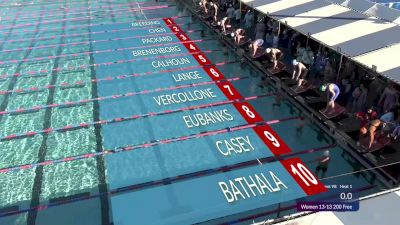 Replay: Finals - 2024 ISCA East Coast Elite Showcase | Apr 6 @ 4 PM
Replay: Finals - 2024 ISCA East Coast Elite Showcase | Apr 6 @ 4 PMApr 7, 2024
 Replay: Prelims Locker Side - 2024 ISCA East Coast Elite Showcase | Apr 6 @ 8 AM
Replay: Prelims Locker Side - 2024 ISCA East Coast Elite Showcase | Apr 6 @ 8 AMApr 6, 2024
 Replay: VMI vs Villanova - WWP - 2024 VMI vs Villanova | Apr 6 @ 11 AM
Replay: VMI vs Villanova - WWP - 2024 VMI vs Villanova | Apr 6 @ 11 AMApr 6, 2024
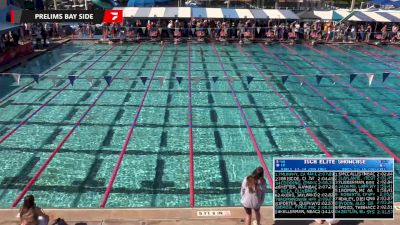 Replay: Prelims Bay Side - 2024 ISCA East Coast Elite Showcase | Apr 6 @ 9 AM
Replay: Prelims Bay Side - 2024 ISCA East Coast Elite Showcase | Apr 6 @ 9 AMApr 6, 2024
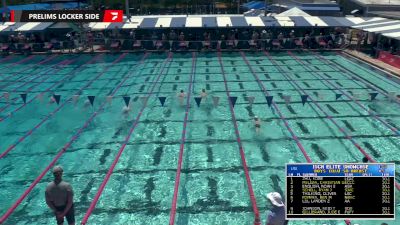 Replay: Prelims Locker Side - 2024 ISCA East Coast Elite Showcase | Apr 5 @ 8 AM
Replay: Prelims Locker Side - 2024 ISCA East Coast Elite Showcase | Apr 5 @ 8 AMApr 6, 2024
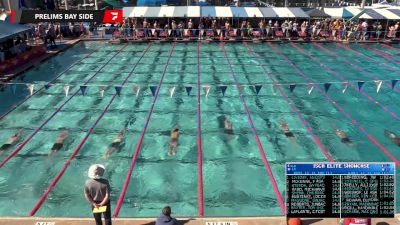 Replay: Prelims Bay Side - 2024 ISCA East Coast Elite Showcase | Apr 5 @ 8 AM
Replay: Prelims Bay Side - 2024 ISCA East Coast Elite Showcase | Apr 5 @ 8 AMApr 5, 2024
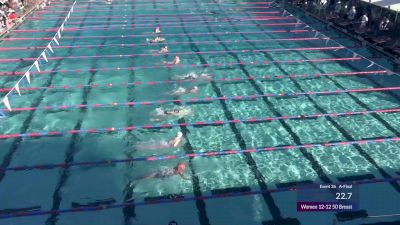 Replay: Finals - 2024 ISCA East Coast Elite Showcase | Apr 4 @ 4 PM
Replay: Finals - 2024 ISCA East Coast Elite Showcase | Apr 4 @ 4 PMApr 5, 2024